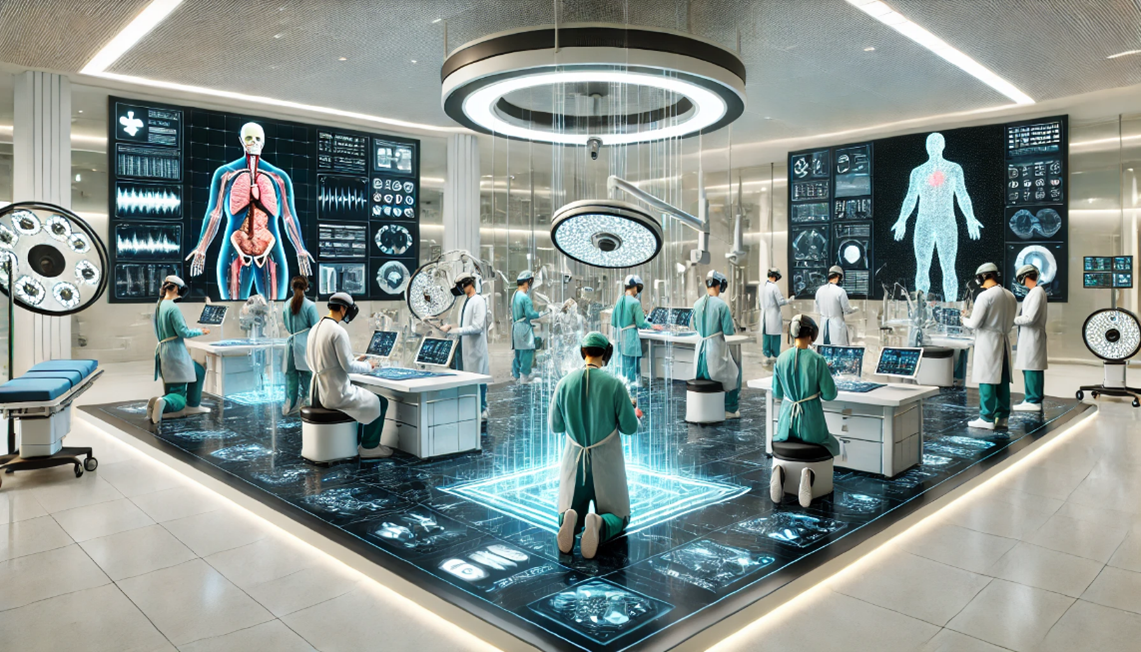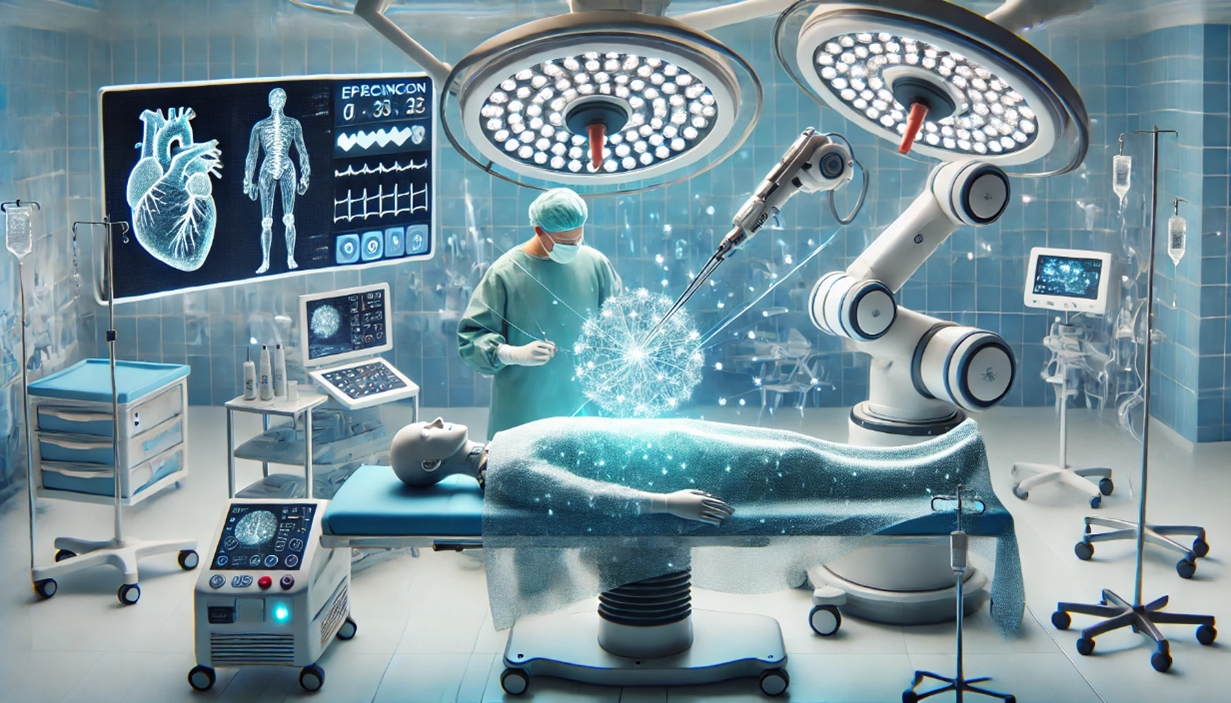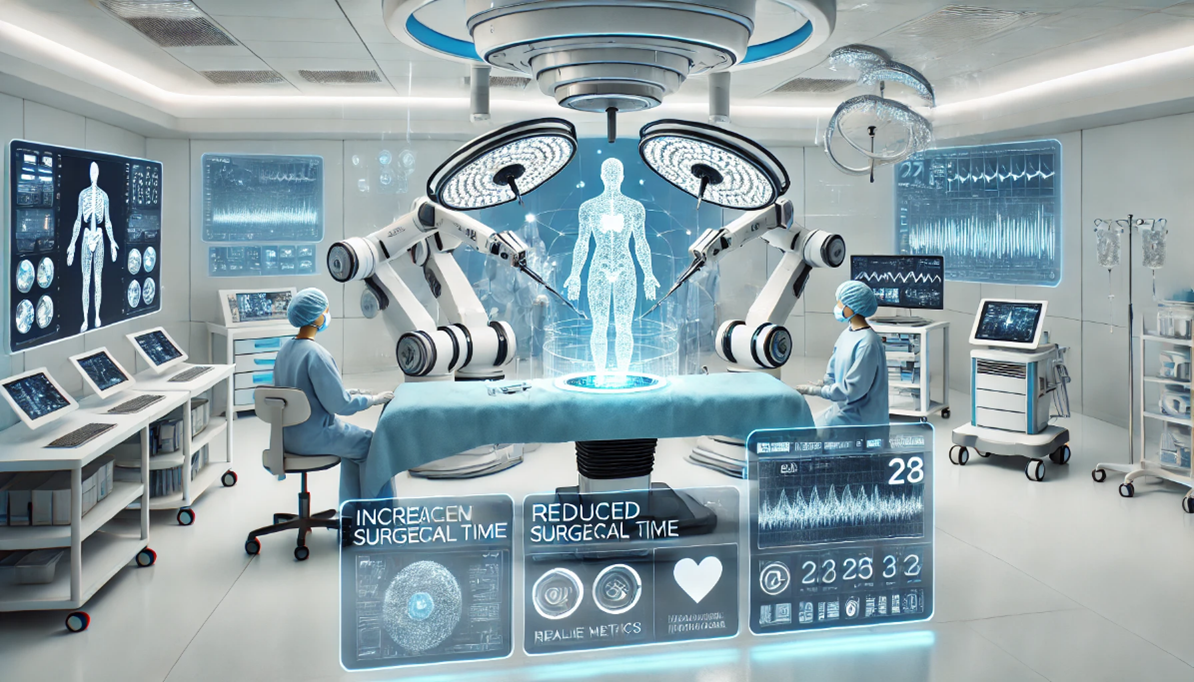How effective are AI-powered surgical robots in improving patient outcomes?

How effective are AI-powered surgical robots in improving patient outcomes?
by Nathaniel 10:48am Feb 01, 2025

How effective are AI-powered surgical robots in improving patient outcomes?
AI-powered surgical robots are becoming an increasingly important tool in modern medicine, offering a range of benefits that can significantly improve patient outcomes. By combining robotic precision, AI-driven insights, and advanced imaging technologies, these systems have the potential to enhance the quality, safety, and efficiency of surgical procedures. While the effectiveness of these robots depends on various factors, including the type of surgery and the integration of AI, research and clinical studies suggest that AI-powered surgical robots can improve patient outcomes in several key ways.
1. Enhanced Precision and Minimally Invasive Procedures
One of the most notable advantages of AI-powered surgical robots is their ability to perform surgeries with enhanced precision. Robotic systems are designed to replicate the movements of a human surgeon while providing greater accuracy and control, which is particularly important for delicate procedures.
a. Improved Precision
Reduced Human Error:AI algorithms can help surgeons by providing real-time feedback, refining their movements, and reducing the potential for human error. This is particularly useful in high-precision surgeries, such as microsurgery, spinal surgery, and cardiovascular procedures, where even small mistakes can lead to serious complications.
Tissue-Sparing Techniques: The robotic arms of AI-powered systems can make smaller incisions with greater precision, leading to less damage to surrounding tissues. This can significantly reduce trauma during surgery, improving recovery times and reducing the risk of complications such as infection.
b. Minimally Invasive Surgery
Smaller Incisions:AI-powered robotic systems like the da Vinci Surgical System or the Mako System allow for minimally invasive procedures that require only small incisions, reducing the need for large cuts or traditional open surgery.Smaller incisions mean less pain, lower risk of infection, and faster recovery times.
Faster Recovery:Because minimally invasive surgeries are less traumatic for the body, patients typically experience reduced post-operative pain and a quicker return to normal activities. This can translate to shorter hospital stays,less time spent on pain management, and fewer complications in the recovery process.
2. Real-Time Data Analysis and Decision Support
AI systems in surgical robots have the ability to analyze vast amounts of real-time data during procedures, providing surgeons with valuable insights that can improve the decision-making process and patient outcomes.
a. Advanced Imaging and Visualization
Enhanced Visualization: AI algorithms can process imaging data from sources such as MRI, CT scans, and intraoperative cameras to provide surgeons with 3D visualizations of the patient's anatomy. These enhanced images enable surgeons to navigate complex procedures with greater accuracy, ensuring that critical structures (e.g., blood vessels, nerves) are avoided and improving surgical precision.
Real-Time Analysis:AI-powered surgical robots can analyze real-time data during surgery, such as monitoring the position of surgical instruments or identifying potential risks like bleeding. This data can be used to inform the surgeon’s actions and alert them to any emerging issues, allowing for faster intervention and reducing the chances of complications.
b. Machine Learning for Personalized Treatment
Tailored Approaches:AI systems can learn from vast datasets of patient history, surgical outcomes, and medical records to assist in the development of personalized reatment plans. By analyzing a patient’s unique anatomy and health conditions, AI can help guide surgeons toward the most effective approach for each individual, leading to better outcomes.
Predicting Complications: Machine learning algorithms can predict potential complications based on patient data. For example, AI can identify patterns in patients' health status that might indicate a higher risk of post-surgical complications such as infections or blood clots. This allows for proactive interventions, potentially preventing these issues before they arise.
3. Increased Efficiency and Reduced Surgical Time
AI-powered surgical robots can also improve the efficiency of surgeries, which can have direct benefits for patient outcomes.
a. Faster Surgeries
Automated and Assisted Procedures: AI can help automate certain aspects of surgery, such as suturing, tissue manipulation, or even complex movements, leading to faster and more efficient procedures. For example, some AI-driven robotic systems can assist with repetitive tasks like suturing, reducing the time a surgeon spends on these tasks and allowing them to focus on the more complex aspects of the surgery.
More Accurate Time Management: AI can help predict the expected duration of surgery by analyzing previous cases and patient data. This helps surgeons plan their actions better, potentially reducing the time a patient spends under anesthesia, which can lower the risk of complications.
b. Reduced Risk of Infection and Complications
Shorter Exposure Times: Because AI-powered robots allow for more efficient surgeries with less invasive techniques, patients spend less time in the operating room, which can reduce the likelihood of infections or other complications related to prolonged exposure to sterile environments.
Precise Control:The AI system’s ability to monitor and control surgical instruments with extreme precision reduces the risk of accidental injury, bleeding, or infection during the operation.
4. Enhanced Postoperative Outcomes and Recovery
AI-powered surgical robots are also improving the postoperative recovery process for patients.
a. Accelerated Healing
Less Trauma and Smaller Incisions: As mentioned, AI-enhanced robotics enable minimally invasive surgeries, which minimize trauma to tissues and muscles. This results in less postoperative pain, fewer complications, and generally quicker healing times for patients.
Quicker Hospital Discharge: Minimally invasive procedures performed by AI-assisted robots often require less time in the hospital, enabling patients to recover at home sooner and with less risk of hospital-acquired infections or other complications.
b. Improved Monitoring and Follow-Up
Post-Surgery Data Analysis: AI systems can continue to monitor patients after surgery by collecting data through wearables or other sensors. AI algorithms can track patient vitals, detect early signs of complications, and provide actionable insights to healthcare providers for prompt intervention if necessary.
Continuous Learning for Better Outcomes: AI’s ability to learn from large datasets means that it can continuously improve its algorithms based on the outcomes of previous surgeries. Over time, this leads to better recommendations for treatment plans and more accurate predictions for recovery times and outcomes.
5. Training and Skill Enhancement for Surgeons
AI-powered surgical robots are also playing a critical role in enhancing the skillset of surgeons and improving training processes.
a. Surgical Training
Simulation and Virtual Reality: AI can create virtual surgical simulations that allow trainees to practice and refine their skills in a safe environment before performing real-life procedures. These simulations can provide real-time feedback, enabling trainees to improve their precision and efficiency.
Mentorship and Assistance: AI can assist less experienced surgeons by offering real-time guidance and support during live surgeries, reducing the learning curve. Some robotic systems have the capability to analyze a surgeon’s actions and provide corrective feedback, which can help improve technique and ensure higher success rates.
Challenges and Considerations
While AI-powered surgical robots offer many advantages, their effectiveness in improving patient outcomes is contingent on several factors:
Cost:The high cost of robotic surgical systems and AI technologies can limit their availability, particularly in resource-limited settings.
Integration with Healthcare Systems: The seamless integration of AI-driven robotic systems into existing healthcare infrastructures can be challenging. Training surgeons, ensuring compatibility with other medical technologies, and overcoming resistance to new technologies are some of the hurdles that need to be addressed.
Ethical and Liability Concerns: As AI systems become more involved in decision-making during surgery, questions about accountability and liability in case of errors or complications may arise. Additionally, ethical concerns about the role of AI in human decision-making are also being debated.
Conclusion
AI-powered surgical robots have demonstrated significant potential in improving patient outcomes by enhancing surgical precision, enabling minimally invasive procedures, providing real-time data analysis, and optimizing recovery processes. These systems offer the ability to reduce human error, improve the efficiency of surgeries, and accelerate postoperative recovery, all of which contribute to better overall outcomes for patients. However, their widespread adoption will depend on addressing challenges related to cost, integration, and ethics. With continued advancements and careful implementation, AI-powered surgical robots are poised to transform the future of surgery, offering better care and improved patient experiences.






